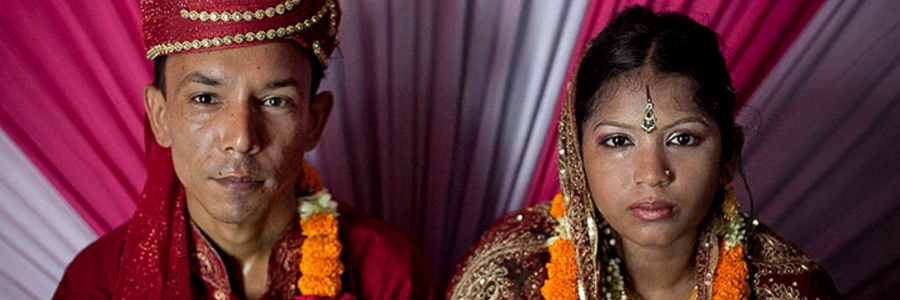Child marriage is defined as a formal or informal union before the age of 18. The practice affects mostly girls.
While child marriage is especially prevalent in low and lower-middle income countries, it is also observed in other countries. It endangers the life trajectories of girls in multiple ways. Child brides are at greater risk of experiencing a range of poor health outcomes, having children at younger ages when they are not yet ready to do so, dropping out of school, earning less over their lifetimes and living in poverty compared to their peers who marry at later ages. Child brides may also be more likely to experience intimate partner violence, have restricted physical mobility, and limited decisionmaking ability. Most fundamentally, child brides may be disempowered in ways that deprive them of their basic rights to health, education and safety. These dynamics affect not only the girls themselves, but also their children and households, as well as communities and entire societies.
Child marriage is widely considered as a violation of human rights and a form of violence against girls. The elimination of child marriage by 2030 is a target under the Sustainable Development Goals (SDGs).
Yet investments to end the practice are limited, and worldwide the incidence of child marriage has been declining too slowly over time to achieve the SDG target. Furthermore, in many countries, it remains legal to marry a girl before she turns 18, and even in countries where marriage before 18 is in principle illegal, too many girls continue to marry early.
This brief summarizes findings from research undertaken by Save the Children and the World Bank on the lack of legal protection against child marriage for girls and marriages that take place below the national minimum age of marriage
. The analysis suggests that many countries still do not effectively legally protect girls against child marriage, but also that legal reforms are not sufficient to end the practice as many girls marry illegally in countries where legal protections are in place. While protecting girls in the law against child marriage is an important first step, additional interventions are needed to prevent child marriage.
KEY MESSAGES
- Child marriage is a harmful practice that disproportionately affects girls, with negative impacts on their health, education, and opportunities in life.
- Child marriage laws are important to provide girls with legal protection and signal commitment to achieving the Sustainable Development Goal target of ending child marriage by 2030.
- Most countries have adopted 18 as the legal age for marriage for girls, but many countries allow younger girls to marry with parental or judicial consent.
- Close to 100 million girls globally are not legally protected against child marriage when considering exceptions that allow marriage at a young age with parental or judicial consent.
- Between 2015 and 2017, nine countries improved their laws on the minimum age for marriage, typically by eliminating exceptions that allow child marriage with parental or judicial consent.
- While national laws against child marriage are important, they are not sufficient for ending the practice. Globally, even after accounting for exceptions to the legal age of marriage with parental or judicial consent, 7.5 million girls marry illegally each year (20,000 girls per day), making up 68 percent of child marriages. ą Additional measures that address the underlying causes of child marriage and that expand access to quality education and other opportunities for girls need to be pursued more actively by governments, with support from the international community.Full report here.
Original source: SaveTheChildren.
Posted on 2 October 2017

